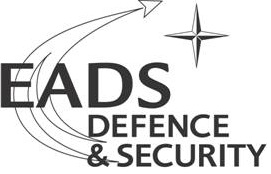EADS Defence & Security increases safety in air traffic

EADS Defence & Security (DS) has developed a new device for automatic aircraft identification, which significantly enhances the tracking of aircraft, particularly helicopters, in airspace and thereby considerably improving air traffic safety.
 As reported by Defence Electronics (DE), an integrated activity of DS, its new lightweight LTR 400-A transponder has now been successfully flight tested by Eurocopter, in cooperation with the German air traffic control organisation DFS (Deutsche Flugsicherung GmbH). This opens up the way for the introduction of the new device to the market, which will start following its certification by the European Aviation Safety Agency (EASA) scheduled for the second quarter of 2010.
State-of-the-art transponders are important in two respects: to increase safety in air traffic and to protect aircraft crews in military missions, explains Bernd Wenzler, CEO of Defence Electronics. The newly developed LTR 400-A automatically transmits flight data to the civil authorities, thereby allowing aircraft and the extremely agile helicopters to be reliably guided. In military operations, identification to military standards also prevents friendly fire.
During its test flight of several hours, which was carried out over southern Germany on board an EC135 demonstrator, the LTR 400-A proved its worth, conforming to the latest civil and military air traffic control standards. Due to its low weight and reduced space requirement, this device is particularly suitable for integration into helicopters, while, however, also being designed for use in fixed-wing aircraft and UAVs.
Transponders are a crucial element to ensure safety in air traffic. As part of air traffic control, interrogators which are also called secondary radars emit signals to request flight data from individual aircraft, e.g. on their origin, course or speed. These requests are then automatically answered by transponders located on board the approaching aircraft, so that the position of each individual aircraft can always be reliably identified. Military aircraft also respond to these non-military requests. Moreover, they also transmit additional data in an encrypted mode, allowing all aircraft to be unmistakably identified, e.g. during military operations, thus preventing inadvertent friendly attacks. For this reason, military aircraft require transponders with both civil and military functions.
EADS Defence & Security has extensive experience in the field of military and civil air traffic control. Its Defence Electronics business unit has already supplied numerous military identification systems for air, naval and ground applications to a number of armed forces, e.g. in Germany, France, Finland and Australia. For civil air traffic control, DEs identification systems are used in countries such as Portugal and the Philippines.
As reported by Defence Electronics (DE), an integrated activity of DS, its new lightweight LTR 400-A transponder has now been successfully flight tested by Eurocopter, in cooperation with the German air traffic control organisation DFS (Deutsche Flugsicherung GmbH). This opens up the way for the introduction of the new device to the market, which will start following its certification by the European Aviation Safety Agency (EASA) scheduled for the second quarter of 2010.
State-of-the-art transponders are important in two respects: to increase safety in air traffic and to protect aircraft crews in military missions, explains Bernd Wenzler, CEO of Defence Electronics. The newly developed LTR 400-A automatically transmits flight data to the civil authorities, thereby allowing aircraft and the extremely agile helicopters to be reliably guided. In military operations, identification to military standards also prevents friendly fire.
During its test flight of several hours, which was carried out over southern Germany on board an EC135 demonstrator, the LTR 400-A proved its worth, conforming to the latest civil and military air traffic control standards. Due to its low weight and reduced space requirement, this device is particularly suitable for integration into helicopters, while, however, also being designed for use in fixed-wing aircraft and UAVs.
Transponders are a crucial element to ensure safety in air traffic. As part of air traffic control, interrogators which are also called secondary radars emit signals to request flight data from individual aircraft, e.g. on their origin, course or speed. These requests are then automatically answered by transponders located on board the approaching aircraft, so that the position of each individual aircraft can always be reliably identified. Military aircraft also respond to these non-military requests. Moreover, they also transmit additional data in an encrypted mode, allowing all aircraft to be unmistakably identified, e.g. during military operations, thus preventing inadvertent friendly attacks. For this reason, military aircraft require transponders with both civil and military functions.
EADS Defence & Security has extensive experience in the field of military and civil air traffic control. Its Defence Electronics business unit has already supplied numerous military identification systems for air, naval and ground applications to a number of armed forces, e.g. in Germany, France, Finland and Australia. For civil air traffic control, DEs identification systems are used in countries such as Portugal and the Philippines.

.jpg)





.png)

Comments
There are no comments yet for this item
Join the discussion